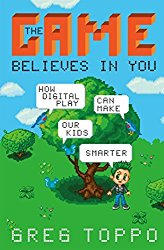 During my edWeb.net webinar today (5PM, eastern), I will interview Greg Toppo, the National Education Writer for USA Today, and author The Game Believes in You. “Fake news” is the buzz phrase of the season. For librarians, this is not a new topic. Teaching source evaluation is our bread and butter. So when I started thinking about what to discuss with Greg during this webinar, it occurred to me that I’ve been stockpiling questions for over five years. I am honored that Greg was able to join us today. Here are my questions for today’s discussion:
During my edWeb.net webinar today (5PM, eastern), I will interview Greg Toppo, the National Education Writer for USA Today, and author The Game Believes in You. “Fake news” is the buzz phrase of the season. For librarians, this is not a new topic. Teaching source evaluation is our bread and butter. So when I started thinking about what to discuss with Greg during this webinar, it occurred to me that I’ve been stockpiling questions for over five years. I am honored that Greg was able to join us today. Here are my questions for today’s discussion:
1. About five years ago, I called the editor of a Wyoming newspaper, and asked him if his publication represented a conservative viewpoint. He bristled. He explained that this was an entirely new phenomenon; that he’d been in the news business for over three decades, and that he resented my assumption that all newspapers had a political slant.*
Question: Does objective journalism exist?
2. The newspaper business is apparently volatile. Interestingly, the Modern Language Association stopped requiring publisher information for periodical citations in April 2016. I can only wonder if that is because ownership changes so  rapidly, In 2013, the Washington Post was bought by Jeff Bezos, the Boston Globe was bought by John Henry, owner of the Boston Red Sox (from the New York Times). In 2015, the Economist which had been owned by Pearson, was sold to the Agnelli Family (owners of Fiat). Newspapers, which used to focus exclusively on article writing, are now expected to produce content that competes with a variety of other online journalistic entities. Newspapers compete for “readers” with cable and network television, streaming and podcast radio, and strictly online media outlets in ways that seemed unthinkable two decades ago.
rapidly, In 2013, the Washington Post was bought by Jeff Bezos, the Boston Globe was bought by John Henry, owner of the Boston Red Sox (from the New York Times). In 2015, the Economist which had been owned by Pearson, was sold to the Agnelli Family (owners of Fiat). Newspapers, which used to focus exclusively on article writing, are now expected to produce content that competes with a variety of other online journalistic entities. Newspapers compete for “readers” with cable and network television, streaming and podcast radio, and strictly online media outlets in ways that seemed unthinkable two decades ago.
Question: Do you consider yourself a newspaper journalist? What distinguishes the newspaper journalist from all the other kinds of media reporters out there?
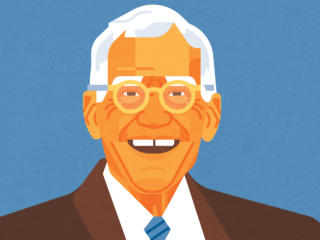 3. At the 2016 New Yorker Festival, Susan Morrison interviewed now retired late-night talk show host David Letterman. The interview was broadcast on the December 22, 2016 edition of the New Yorker Radio Hour podcast. During the interview, she made this statement, “One of the things that is different about the crop of late night shows out there now … [they] seem to exist to create a batch of YouTube clips that everybody watches the next day.”
3. At the 2016 New Yorker Festival, Susan Morrison interviewed now retired late-night talk show host David Letterman. The interview was broadcast on the December 22, 2016 edition of the New Yorker Radio Hour podcast. During the interview, she made this statement, “One of the things that is different about the crop of late night shows out there now … [they] seem to exist to create a batch of YouTube clips that everybody watches the next day.”
Question: To what extent, if at all, does that pressure apply in the news industry?
4. I had a conversation with an editor at the Wall Street Journal several years ago. She explained that while most of the publication’s journalistic content remains behind its paywall, they keep much of the editorial content, Review & Commentary and blogs, available to non-subscribers. She also explained that the publication periodically (no pun intended) released exclusive, or high-interest journalistic content to the public for free for a short period (12-72 hours) hoping to drum up subscriptions once the article received extensive attention through social media and then dropped it back behind the paywall.*
Question: As a reporter, do you think we ought to explain the difference between “free news” and subscription news to our students, and if so, what is that difference?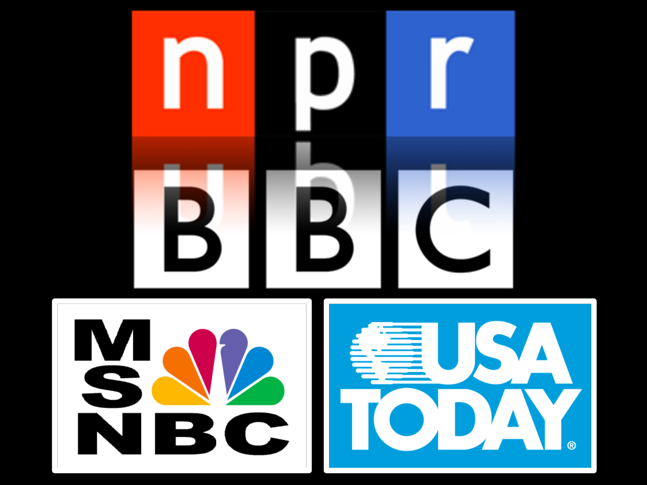
5. This is a follow-up to the last question, and I will talk about this more next month, but it is very difficult to teach students how to differentiate between media producers. They do not understand the difference between NPR, the BBC, MSNBC, Newsweek, and USA Today. To them, they are all generating news either in video, audio, text, infographic, or some other format.
Question: Should students know the difference between the various formats of news or is news just news?

Ben Smith, BuzzFeed Editor-in-Chief
6. In the January 27 edition of the New Yorker Radio hour, David Remnick interviewed Ben Smith, BuzzFeed’s editor-in-Chief. During the interview, Smith made this statement: “There are certain kinds of decisions that I’ve certainly made through my career and that I think a lot of places that grew up in this new ecosystem have where the fact that older institutions have a reflex that’s rooted in their history and their traditions in this notion that they are – this sort of vestigial notion – that they probably wouldn’t even say aloud – but that is in their culture and that their job to keep the gate and keep information from their audience at certain times.”
Question: Do you agree that long-standing news providers feel a gate-keeping responsibility when it comes to releasing stories? If so, is this sustainable?
7. Several years ago. NPR’s Steve Inskeep interviewed three reporters on the 2012 campaign trail about a 40 year old book called Boys on the Bus by Timothy Crouse, which was about the 1972 Nixon/McGovern campaign.

“In a way, Twitter is the new bus” – Anne Kornblut
Steve Inskeep: “There’s another thing that strikes me about this book, and it’s the way that there were a few reporters who are identified who seem to influence other reporters. In 1972, I think I think the leading guy was R.W. Apple – Johnny Apple of the New York Times.”
Jonathan Martin of Politico: “Walter Mears too of the AP. There was a saying about, ‘What’s the lead, Walter?’ which was sort of the stock phrase these guys would say on the campaign trail – and that was to Walter Mears, ‘What is the news out of this event?’ ‘What’s the lead of the story?’ I think that there are still those individuals on the campaign trail, certainly. I think there is much more fragmentation now in the political news media and there are just so many outlets that you don’t quite have the same pack journalism that you probably did back in 1972.”
Steve Inskeep: “Oh wait a minute, let me just challenge that and you guys tell me if I am wrong. I think if I follow the coverage there are many, many outlets who all will obsess over the same irrelevant story at the same time.”
Martin: “Oh that’s fair. Oh sure.”
Ashley Parker of the New York Times: “But that’s less of turning to one person who’s sort of the pack leader and I think part of that is a result of Twitter. Which is that anyone with a handle can Tweet out a story and generate buzz for a story so it doesn’t matter if you’re the senior correspondent or you’re a blog with a scoop. And then it all sort of gets retweeted.” “If you see lots and lots of Tweets about something, do you feel compelled to jump on that story?
Question: What drives the lead these days? This interview is five years old. Was Twitter the new driver for media then? Is it still? What other forces are out there?
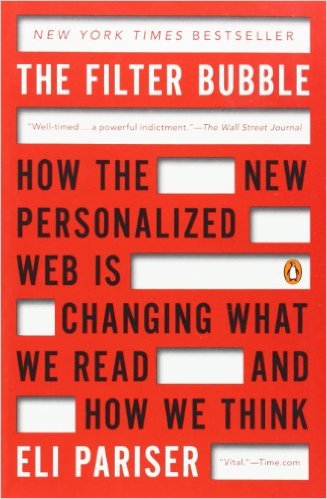 8. There was a time when the newspaper was delivered to us on our doorstep and that an editorial board in a nearby city controlled the content in that publication. In that world, we read the paper, which was not tailored to our individual opinions, but rather designed to appeal to the widest possible readership. Ad revenue depended on that. We were exposed to information with which we did not necessarily agree, and content that may not have fit within our realm of interests. This is how we made discoveries about new perspectives and information.
8. There was a time when the newspaper was delivered to us on our doorstep and that an editorial board in a nearby city controlled the content in that publication. In that world, we read the paper, which was not tailored to our individual opinions, but rather designed to appeal to the widest possible readership. Ad revenue depended on that. We were exposed to information with which we did not necessarily agree, and content that may not have fit within our realm of interests. This is how we made discoveries about new perspectives and information.
In 2011, Eli Pariser did a little experiment that turned into a book called The Filter Bubble: What the Internet Is Hiding from You. Here’s a quote, “Ultimately, democracy works only if we citizens are capable of thinking beyond our narrow self-interest. But to do so, we need a shared view of the world we cohabit. We need to come into contact with other people’s lives and needs and desires. The filter bubble pushes us in the opposite direction – it creates the impression that our narrow self-interest is all that exists. And while this is great for getting people to shop online, it’s not great for getting people to make better decisions together.”
The concept of the Filter Bubble resurfaced shortly after the election.
Question: What role do you think our mechanisms for news retrieval have played in the political polarization of this country?
9. This fall, The Stanford History Education Group published a study called Evaluating Information: The Cornerstone of Civic Online Reasoning. Here is an excerpt from the executive summary: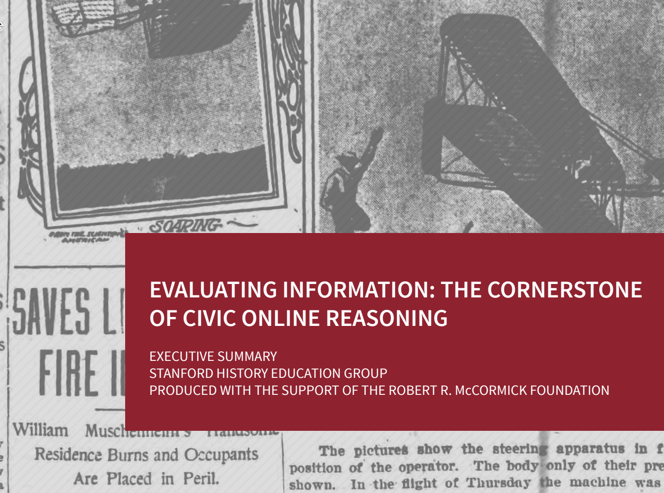
“Our “digital natives” may be able to fit between Facebook and Twitter while simultaneously uploading a selfie to Instagram and texting a friend. But when it comes to evaluating information that flows through social media channels, they are easily duped. We did not design our exercises to shake out a grade or make hairsplitting distinctions between a “good” and a “better” answer. Rather, we sought to establish a reasonable bar, a level of performance we hoped was within reach of most middle school, high school, and college students. For example, we would hope that middle school students could distinguish an ad from a news story. By high school, we would hope that students reading about gun laws would notice that a chart came from a gun owners’ political action committee. And, in 2016, we would hope college students, who spend hours each day online, would look beyond a .org URL and ask who’s behind a site that presents only one side of a contentious issue. But in every case and at every level, we were taken aback by students’ lack of preparation. For every challenge facing this nation, there are scores of websites pretending to be something they are not. Ordinary people once relied on publishers, editors, and subject matter experts to vet the information they consumed. But on the unregulated Internet, all bets are of. Michael Lynch, a philosopher who studies technological change, observed that the Internet is “both the world’s best factchecker and the world’s best bias confrmer— often at the same time.”1 Never have we had so much information at our fingertips. Whether this bounty will make us smarter and better informed or more ignorant and narrow-minded will depend on our awareness of this problem and our educational response to it. At present, we worry that democracy is threatened by the ease at which disinformation about civic issues is allowed to spread and flourish.”
Question: What role does education play in the “gullibility” of news consumers?
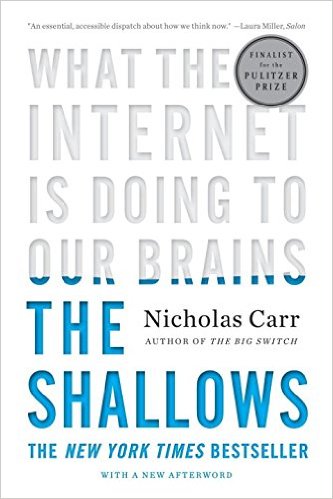 10. In 2008, Nicholas Carr wrote a piece for The Atlantic called Is Google Making us Stupid? Three years later, he published the follow-up book, The Shallows: What the Internet is Doing to Our Brains. Here is a quote:
10. In 2008, Nicholas Carr wrote a piece for The Atlantic called Is Google Making us Stupid? Three years later, he published the follow-up book, The Shallows: What the Internet is Doing to Our Brains. Here is a quote:
“The Net’s interactivity gives us powerful new tools for finding information, expressing ourselves, and conversing with others. It also turns us into lab rats constantly pressing levers to get tiny pellets of social or intellectual nourishment.”
Question: Do you think our attention spans are shrinking? If so how does that change the way news outlets deliver media?
11. Very recently. Teen Vogue recently shifted its focus toward social issues, identity, and activism.
Question: What lessons can we as educators, and media outlets learn from Teen Vogue’s choice to focus more on social consciousness and civic awareness?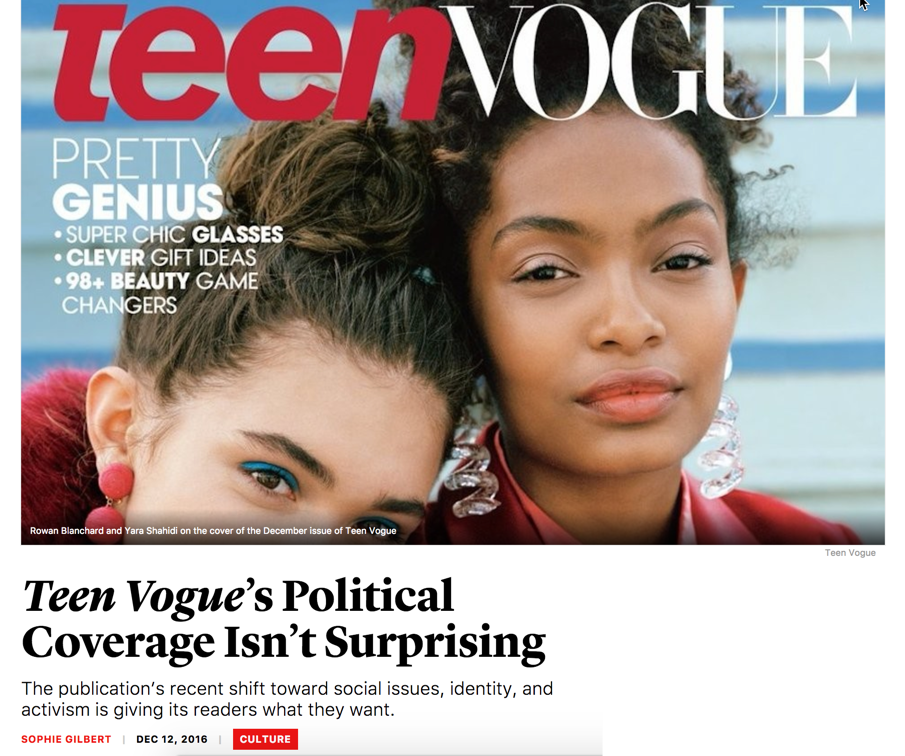
12. That’s all I have for questions.
Question: What should we add before we close?
* Had I known I would refer back to these two conversations over and over again for years, I would have approached them more “journalistically”and documented the names of my sources, and the dates of the conversations, but sadly, I approached them both as a school librarian trying to get questions for my next class. I will always regret this.






